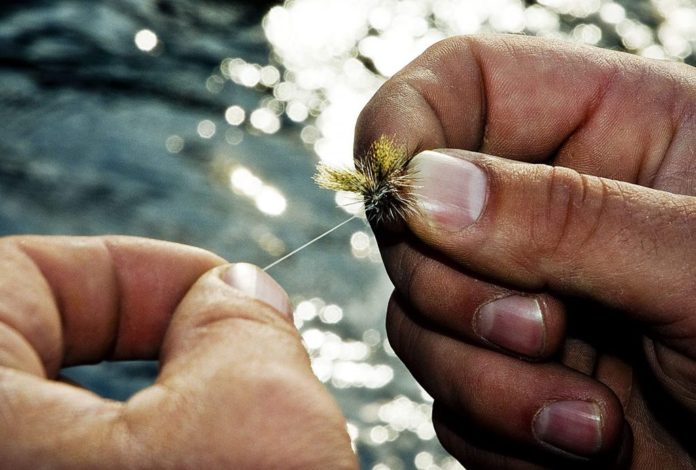Louis Cahill/Courtesy photo | Louis Cahill/Courtesy photo
Over the years we have encountered many frustrated anglers who cannot figure out why the fish are continually refusing their flies. Individuals often drop in complaining that numerous fish would inspect their particular pattern and refuse it. They will then explain that they changed flies several times and the fish repeated their inspections and 95% of the time refused the fly. This is especially true while dry fly fishing or sight nymphing while one bears witness to these annoying recurrences. The fact that you are getting refusals usually lends us to believe that the “drift is quite good.” This being the case, all that is needed is to lighten up on your tippet size in most circumstances.
Typically, if your fly is being refused at the last moment the trout likes what is being seen from a distance. However, with closer inspection there are three major things that cause trout to refuse a fly. These are micro drag, a fly that is one size too big or too small and too large a tippet. Micro drag is a slight imperfection in your presentation caused by small subtleties during the drift; usually only the most selective fish notice micro drag. Most anglers try different size flies most of the time in their efforts to figure out the issue. However, 95% of the time when an angler consistently changes flies and fish consistently refuse the offering, the problem can be attributed to too large a tippet diameter. The simple solution is to drop down in tippet diameters. Sometimes dropping down by one size is enough, while other situations may require dropping down several sizes.
Tippet size is influenced by several factors. These factors include the size of your fly, water clarity, water speed and temperament of your quarry. Generally, the larger your fly, the larger your tippet can be. Heavy, fast or discolored water usually enables you to use slightly heavier tippets than if conditions are low and clear. You will also encounter fish that can be leader shy or on more heavily fished waters, trout that are more selective and cautious. With these thoughts in mind you need to adjust your tippet accordingly. You may be able to fish a size 12 green drake tied to 3X on a big freestone river like the Roaring Fork, while you will need to size down to 5X when fishing that same fly on a tailwater like the Fryingpan. Keep experimenting out there, and we hope you have some eureka moments soon out on the river.
This column is provided by Taylor Creek Fly Shops in Aspen and Basalt. Taylor Creek can be reached at 970-927-4374.

Readers around Aspen and Snowmass Village make the Aspen Times’ work possible. Your financial contribution supports our efforts to deliver quality, locally relevant journalism.
Now more than ever, your support is critical to help us keep our community informed about the evolving coronavirus pandemic and the impact it is having locally. Every contribution, however large or small, will make a difference.
Each donation will be used exclusively for the development and creation of increased news coverage.
Credit: Source link






























